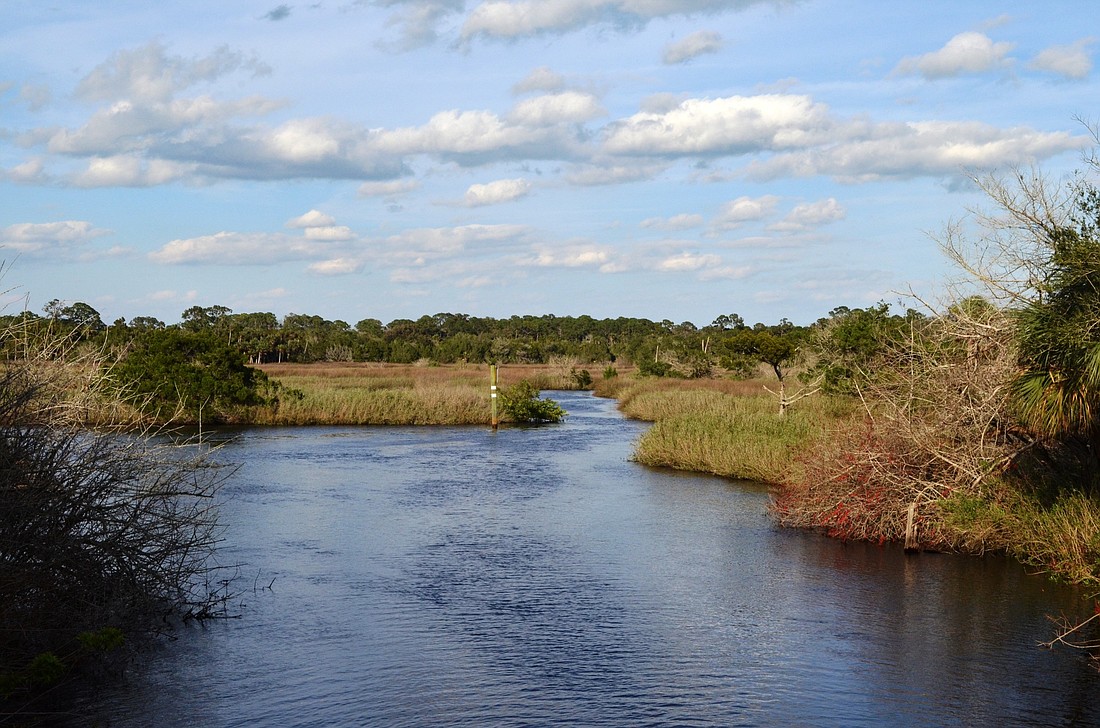- April 26, 2024
-
-
Loading

Loading

Ginger Adair, director of environmental management for Volusia County, said that currently all wetlands get the same protection, no matter how significant they are. That’s why new regulations being considered by the County have standards for three areas: Basic, which are urban areas; Intermediate, which are only in unincorporated areas; and Priority, which include Outstanding Florida Waters or water deemed important by the County..
“We want to provide the highest protection for wetlands with the highest significance,” she said.
Another reason for making the change, Adair said, is that the regulations have not been revised since 1989, and land use and science have both changed.
She was speaking Feb. 8 at a public meeting on proposed changes to the county wetlands regulations.
The most significant change is that in Priority areas, the buffer has been increased from 25 feet to 50 feet. Examples of priority water include the Halifax and Tomoka rivers.
The County Council could vote on them as early as March 15. Meanwhile, city officials in Ormond Beach have asked in a letter to the County to not make the changes, but rather adopt St. Johns River Water Management standards. The city says the proposals could slow development and add a new layer of regulations for property owners.
“Anytime you put broad regulations in effect, there are winners and losers,” said City Commissioner James Stowers. “Let’s stop the madness of all the documents you’ve got to go through to figure what you can do with your property.”
If approved in March by the county, cities will be required to adopt the standards by January 2017. At the public meeting, county staff members said it was probably doubtful the regulations would be approved in March. If it is pushed back, then the requirement for the cities to adopt the regulations would be pushed back also.
Adair said the city could have regulations more stringent than the County requirements, but could not be less. Cities could also not set regulations and defer to the County.
Adair explained at the meeting that the change would not necessarily affect a homeowner on a Priority waterway, because the buffer would apply only to a new impact. For example, if a lawn runs down to the water, there has already been an impact, so a new structure in the 50-foot buffer would likely not be forbidden.
However, development with a new impact could be affected in the Priority area. A 50-foot buffer would be required, but the landowner could get a permit to build within the buffer from the city, which would involve mitigation.
An interactive map is available at Volusia.org/wetlands, allowing a land owner to see what type of zone they would be in. Adair said the map is not entirely accurate, and asked property owners to contact the department to make corrections. Email [email protected].
The city of Ormond Beach has limited areas of commercial zoning in Priority areas. According to city documents, there are only three commercial properties in Priority areas, a restaurant at 950 N. U.S. 1, an office building at 200 Booth Road and vacant land at 1003 and 1005 N. U.S. 1.
The rest of the city, including the industrial areas along North U.S. 1, Airport Road and Hull Road, would be in the Basic area. State rules for wetland conservation continue to apply in the Basic areas.